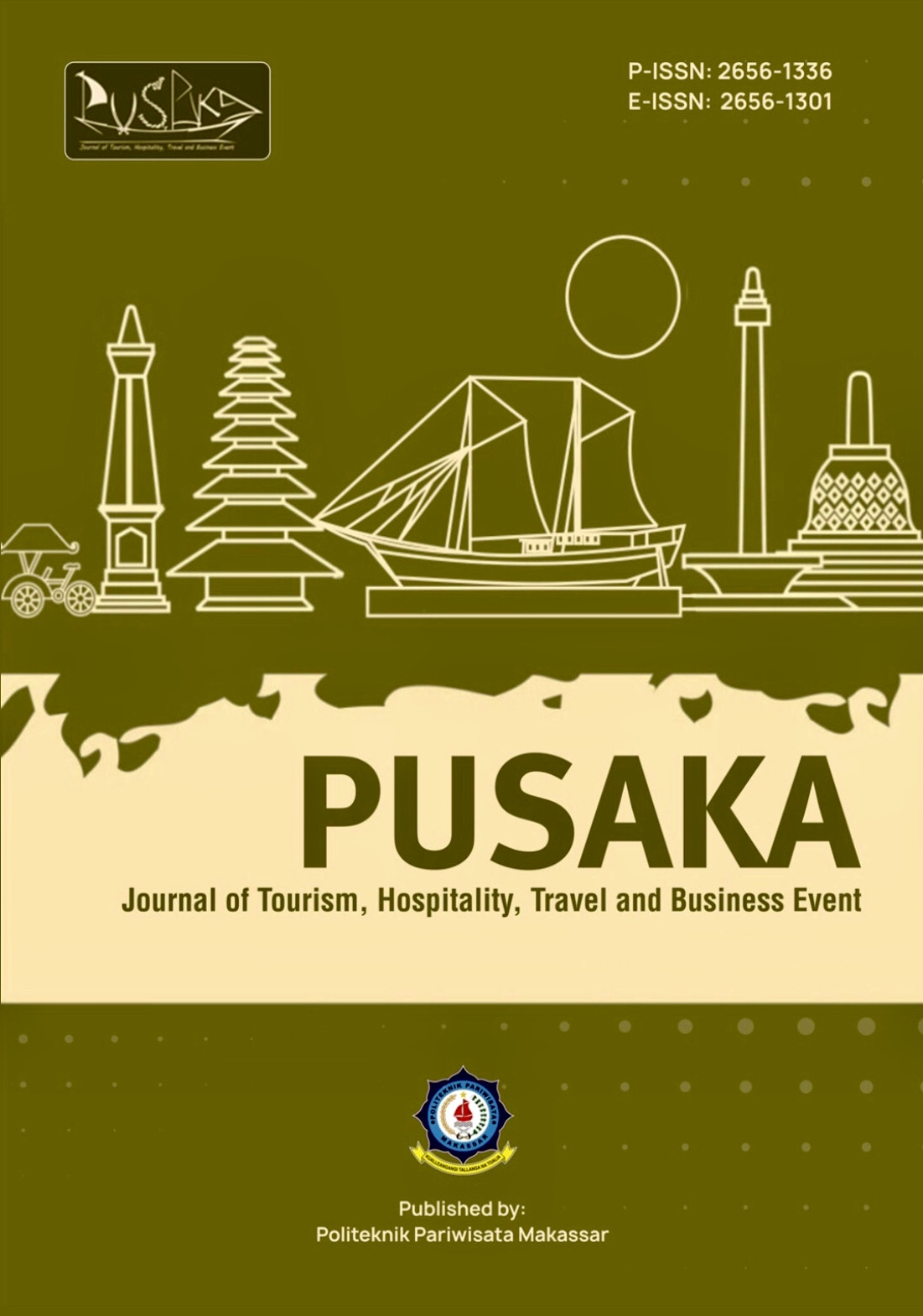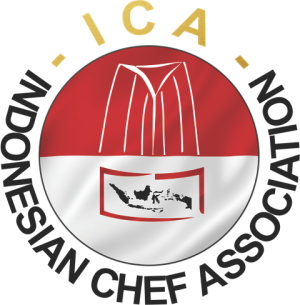The Moringa Superfood: Iconic Gastronomic Tourism Food in Ubud Gianyar
Makanan Super Kelor: Wisata Gastronomi yang Ikonik Makanan di Ubud Gianyar
DOI:
https://doi.org/10.33649/pusaka.v6i2.288Keywords:
Moringa, gastronomy tourism, iconic food, ubudAbstract
Moringa has gained popularity in the world of gastronomy due to its nutritional value and great versatility. Moringa leaves are rich in nutrients and can be used in a variety of dishes. The leaves have a unique flavor and a vibrant green color that enhances the dish. With such potential, moringa can become one of the most iconic gastronomic tourism foods, especially in Bali. This research aims to explore the potential of moringa as a gastronomic icon. The research utilizes a qualitative method by analyzing the results of in-depth interviews and interpreting the data. The research concludes that by understanding the uniqueness of moringa, this food ingredient can be developed into food and beverage menus that are widely consumable. Promotion through culinary festivals and events, moringa nutrition education, and incorporating moringa into cooking class activities are all efforts to establish this food ingredient as a gastronomic icon, particularly in Ubud, Gianyar. Furthermore, promoting moringa-based products can contribute to the promotion of health tourism, attracting visitors interested in wellness and nutritional benefits, thereby supporting the local economy.
References
Aaker, D.A. (1999). Managing Brand Equity: Capitalizing on the value of a brand name. New York: The Free Press.
Asensi, G.D., Villadiego, A.M., & Berruezo, G.F. (2017). Moringa oleifera: Revisión sobre aplicaciones y usos en alimentos. Archivos Latinoamericanos De Nutricion, 67, 86-97.
Atteya, A.K.G.; Albalawi, A.N.; Bayomy, H.M.; Alamri, E.S.; Genaidy, E.A.E. (2022). Maximizing Leaves, Inflorescences, and Chemical Composition Production of Moringa oleifera Trees under Calcareous Soil Conditions. Plants 2022, 11, 234. https://doi.org/10.3390/plants 11020234 2-3.
Bestari, N. M. P., Suryawan Wiranatha, A., Oka Suryawar- dani, I. G. A., and Darma Putra, I. N. (2022). Rejuvenat- ing Cultural Tourism Through Gastronomic Creative Tourism in Ubud Bali. Mudra Jurnal Seni Budaya, 37(2), 136–145. https://doi.org/10.31091/mudra.v37i2.1938.
Bj¨ork, P., and Kauppinen-R¨aisanen, H. (2016). Exploring the multi-dimensionality of travellers’ culinary-gastronomic experiences. Current Issues in Tourism, 19(12), 1260–1280. https://doi.org/10.1080/13683500.2013.868412
Chen, Q, and Huang, R. (2018). Local food in China: a viable destination attraction British Food Journal, Vol. 120 No. 1, pp. 146-157. https://doi.org/10.1108/BFJ-03-2017-0135.
Cohen, E. (2012). Authenticity in Tourism Studies: After Two Decades of Theoretical Debates. Tourist Studies, 12(1), 73–89.
Cole, S. (2008). Tourism, Culture, and Development: Hopes, Dreams and Realities in East Indonesia.
Drumstick (Moringa oleifera): A multipurpose. Indian Veg. Econ. Bot. 1980, 34, 276–283.
Ellis, A., Park, E., Kim, S., and Yeoman, I. (2018). What is food tourism? Tourism Manage- ment Tourism Management, 68(April), 250–263. https://doi.org/10.1016/j.tourman.2018.03.02
Gartner, W. C. (1994). Tourism destination brand equity dimensions: Renewal versus repeat market. Journal of Travel Research, 50(5), 471–481. https:// doi.org/10.1177/0047287510379157
Goodson, L., & Phillimore, J. (2004). Qualitative research in tourism : ontologies, epistemologies and methodologies.
Hamza, T.A., & Azmach, N.N. (2017). The miraculous moringa trees: From nutritional and medicinal point of views in tropical regions. Journal of Medicinal Plants Studies, 5, 151-162.
Hariana, A. (2008). Tumbuhan Obat dan Khasiatnya. Penebar Swadaya. Jakarta.
Haryadi, Nur Kholis. (2011). Kelor Herbal Multikhasiat. Solo: Delta Media.
Horn, L.N., Shakela, N., Mutorwa, M.K., Naomab, E., & Kwaambwa, H.M. (2022). Moringa oleifera as a sustainable climate-smart solution to nutrition, disease prevention, and water treatment challenges: A review. Journal of Agriculture and Food Research.
Horng, J.-S., and Lin, L. (2017). Gastronomy and Culinary Creativity In J. C. Kaufman, V. P. Gl˘aveanu, and J. Baer (Eds.), The Cambridge Handbook of Creativity across Domains, Cambridge Handbooks in Psychology, pp. 462–478. Cambridge: Cambridge University Press.
Jones, P.D. (1999) Vegetative and Reproductive tissue of the multipurpose tree, Moringa oleifera. Journal on the propaga- tion and growing of multipurpose trees, vol. 19, 56: 60–78. 51, 3546–3553.
Karım, S.A., (2006). Culinary Tourism as a Destination At- traction: An Empirical Examination of The Destination’s Food Image and Information Sources Oklahoma State University.
Kartini, A. R. (2021). Analisis Swot Terhadap Storynomics Tourism Sebagai Strategi Promosi Pariwisata (Studi Kasus Kawasan Wisata Kali Cisadane, Kota Tangerang, Banten, In- donesia). Dynamic Management Journal, 5(2), 58–69.
Kim, J.-H. (2018). The Impact of Memorable Tourism Experi- ences on Loyalty Behaviors: The Mediating Effects of Destina- tion Image and Satisfaction. Journal of Travel Research, 57(7), 856-870. https://doi.org/10.1177/0047287517721369
Kompas (2022). Kelor: Tak- sonomi, Morfologi, dan Deskripsinya. https://www.kompas.com/skola/read/2022/04/26/103000269/kelortaksonomi-morfologi-dan deskripsinya?page=all.
MacRae, G. (2016). Ubud: Between Global and Local in Bali. Tourist Studies, 16(1), 54-67.
Martin, C.A, Izquierdo C.M, GAsrcia, M.L. (2021). Culi- nary tourism experiences: The e↵ect of iconic food on tourist intentions, Tourism Management Perspectives. Volume 40, https://doi.org/10.1016/j.tmp.2021.100911
Morton, J.F. (1991). The horseradish tree, Moringa ptery- gosperma (Moringaceae) a boon to arid lands. Econ. Bot. 1991,45, 318–333.
Navarro, V., Serrano, G., Lasa, D., Luis, A., and Ayo, J. (2012). Cooking and nutritional science Gastronomy goes fur- ther. International Journal of Gastronomy and Food Science,1(1), 37–45. https://doi.org/10.1016/j.ijgfs.2011.11.004
Park, E and Andy Widyanta. (2022). Food tourism experience and changing destination foodscape: An exploratory study of an emerging food destination, Tourism Management Perspectives Volume 42, https://doi.org/10.1016/j.tmp.2022.100964
Patterson, I., and Leeson, G. W. (2019). A developing niche market in gastronomic tourism International Jour nal of Gastronomy and Food Science, 16(April), 100152. https://doi.org/10.1016/j.ijgfs.2019.10015
Picard, M. (1997). Cultural Tourism in Bali: Cultural Performances as Tourist Attraction. Tourism Culture & Communication, 1(1), 7-16.
Putra, IND, AAG Raka, PS Yanthy and PDS Pitanatri. (2018). Wisata Gastronomi Ubud, Gianyar.
Ramachandran, C., Peter, K.V., Gopalakrishnan, P.K. (1980).
Riastiwi, I., Damayanto, I., Ridwan, R., Handayani, T., & Leksonowati, A. (2018). Moringa oleifera Distribution in Java and Lesser Sunda Islands which is Attributed with Annual Rainfall. Biosaintifika: Journal of Biology & Biology Education, 10(3), 613-621. doi:https://doi.org/10.15294/biosaintifika.v10i3.1611
Richards, G. (2002). “Gastronomy: an essential ingredient in tourism production and consumption”, dalam A. Hjalager and Richards, G (Eds), Tourism and Gastronomy pp. 3-20. London: Routledge Advance in Tourism.
Rockwood, J.L.; Anderson, B.G.; Casamatta, D.A. (2013). Po- tential uses of Moringa oleifera and an examination of antibi- otic e cacy conferred by M. oleifera seed and leaf extracts using crude extraction techniques available to underserved indigenous populations. Int. J. Phytother. Res. 2013, 3, 61–71.
Rusinova, K., Pochard, F., Kentish-Barnes, N., Chaize, M., & Azoulay, É. (2009). Qualitative research: adding drive and dimension to clinical research. Critical care medicine, 37 1 Suppl, S140-6.
S´anchez-Can˜izares, S. M., and Lo´pez-Guzm´an, T. (2012) Gastronomy as a tourism resource: Profile of the culi- nary tourist. Current Issues in Tourism, 15(3), 229–245. https://doi.org/10.1080/13683500.2011.589895.
Sahin, E., (2015). Bir Destinasyon Unsuru Olarak Yerel Gas- tronominin Marka Sehir Pazarlamasında Etkileri: Gaziantep Ornegi Gaziantep University, Institute of Social Sciences, Department of Gastronomy and Culinary Arts, MA Thesis, Gaziantep.
Sulistya, W., Nurhayati, Santoso, E., Nuryadi, Pratikto, A. S., Fatchiyah, Suhatno, Firdausi, Y.,Triyani, S., Soesilo, K., Nurdiana, S., Ridwan, B., Khoerini, E. S., Yuswantoro, A., Jauhari,Wahyuni, N., Utomo, J. B., Muharsyah, R., Fauzi, M. A., Eksawati, R., Misbahudin, D., Ariefianty, D., Yulianti, Romadhon, S., Sartika, K. A., Prajasat, M. A., Suranto, Rochada, Dewi, F., Suziana & Risya, H. B. (2011). Atlas curah hujan di Indonesia rata-rata 1981 – 2010. Jakarta, ID: Badan Meteorologi Klimatologi dan Geofisika.
Tilong, A.D. (2012). Ternyata, Kelor Pencegah Diabetes. Diva Press. Yogyakarta.
Trigo, C., Castelló, M.L., Ortolá, M.D., García-Mares, F.J., & Desamparados Soriano, M. (2020). Moringa oleifera: An Unknown Crop in Developed Countries with Great Potential for Industry and Adapted to Climate Change. Foods, 10.
USDA (2022). United States Department ofAgriculturehttps://plants.usda.gov/home/plantProfile?symbol=MOOL.
Wearing, S., Stevenson, D., & Young, T. (2010). Tourism and the Modern Subject: Tourist Studies and the Subjectivity of Travel. Tourism Recreation Research.
Wirawan, P. E. ., Supartini, N. L., and Sudiana, I. M. . (2022). Moringa Leaf-Based Gastronomic Tourism in Taro Village, Gi- anyar, Bali International Journal of Social Science and Busi- ness, 6(4). https://doi.org/10.23887/ijssb.v6i4.52065
Yu¨ksel A and Yu¨ksel F (2002). Market segmentation based on tourists’ dining preferences. Journal of Hospitality and Tourism Research 26(4): 315–331.
Downloads
Published
How to Cite
Issue
Section
License
Copyright (c) 2024 Putu Sucita Yanthy, Yayu Indrawati, Azila Azmi, Ni Nyoman Sri Aryanti, L.G.L.K. Dewi, Ni Wayan Purnami Rusadi

This work is licensed under a Creative Commons Attribution-ShareAlike 4.0 International License.






















